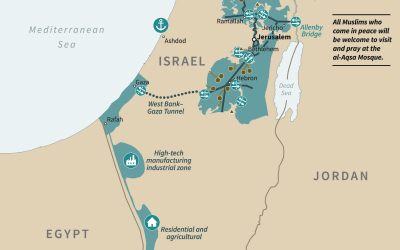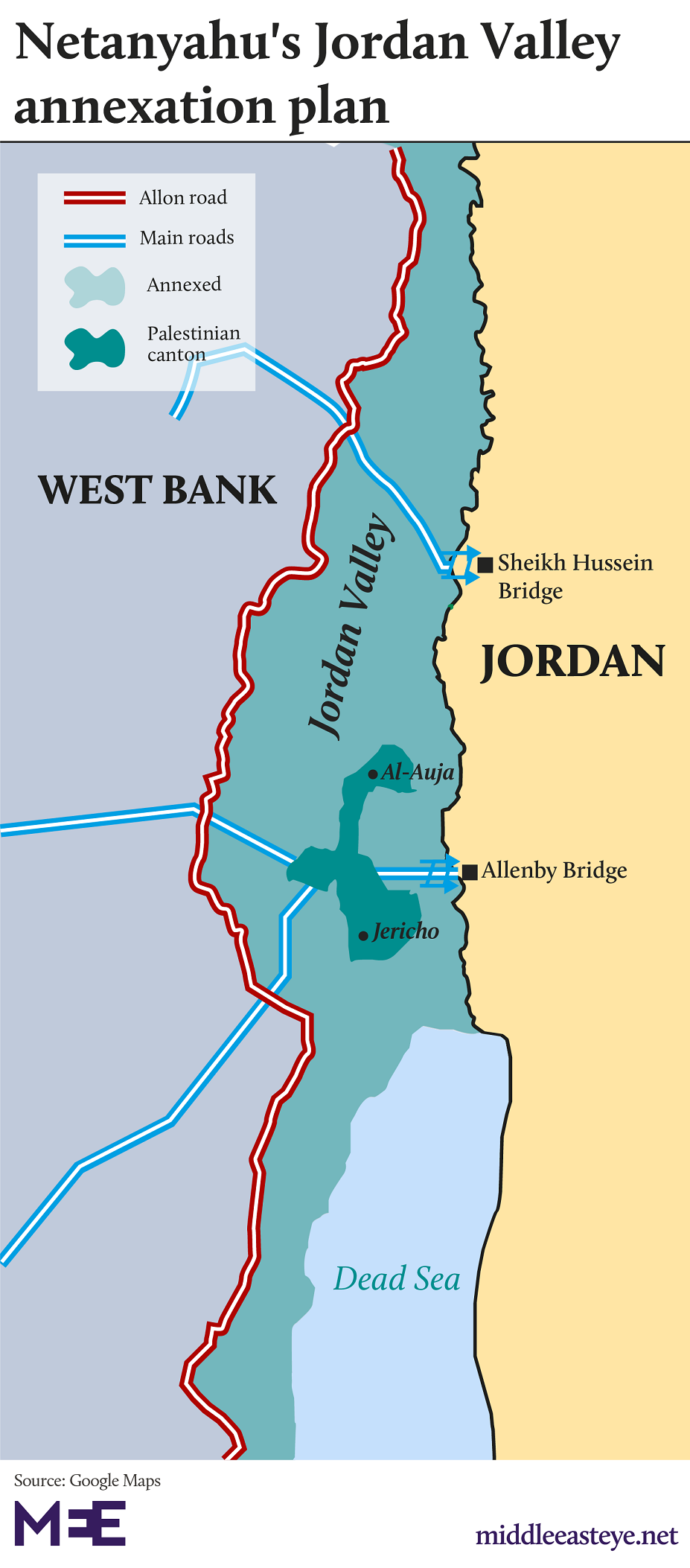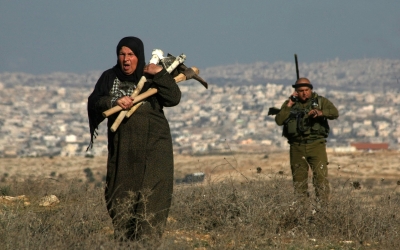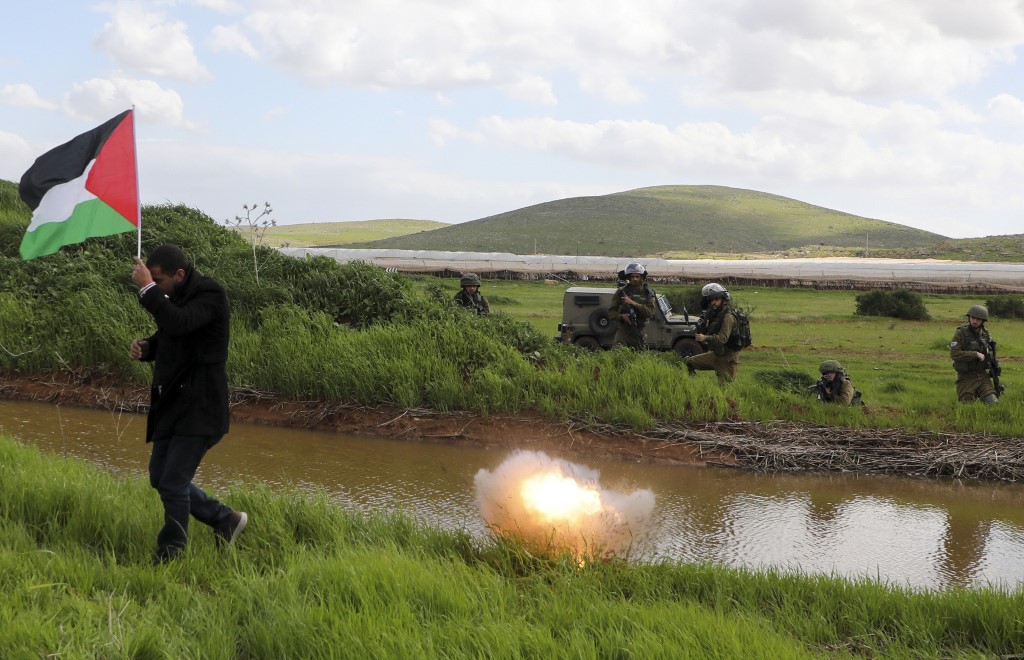Israel's planned annexation of the Jordan Valley: Why it matters
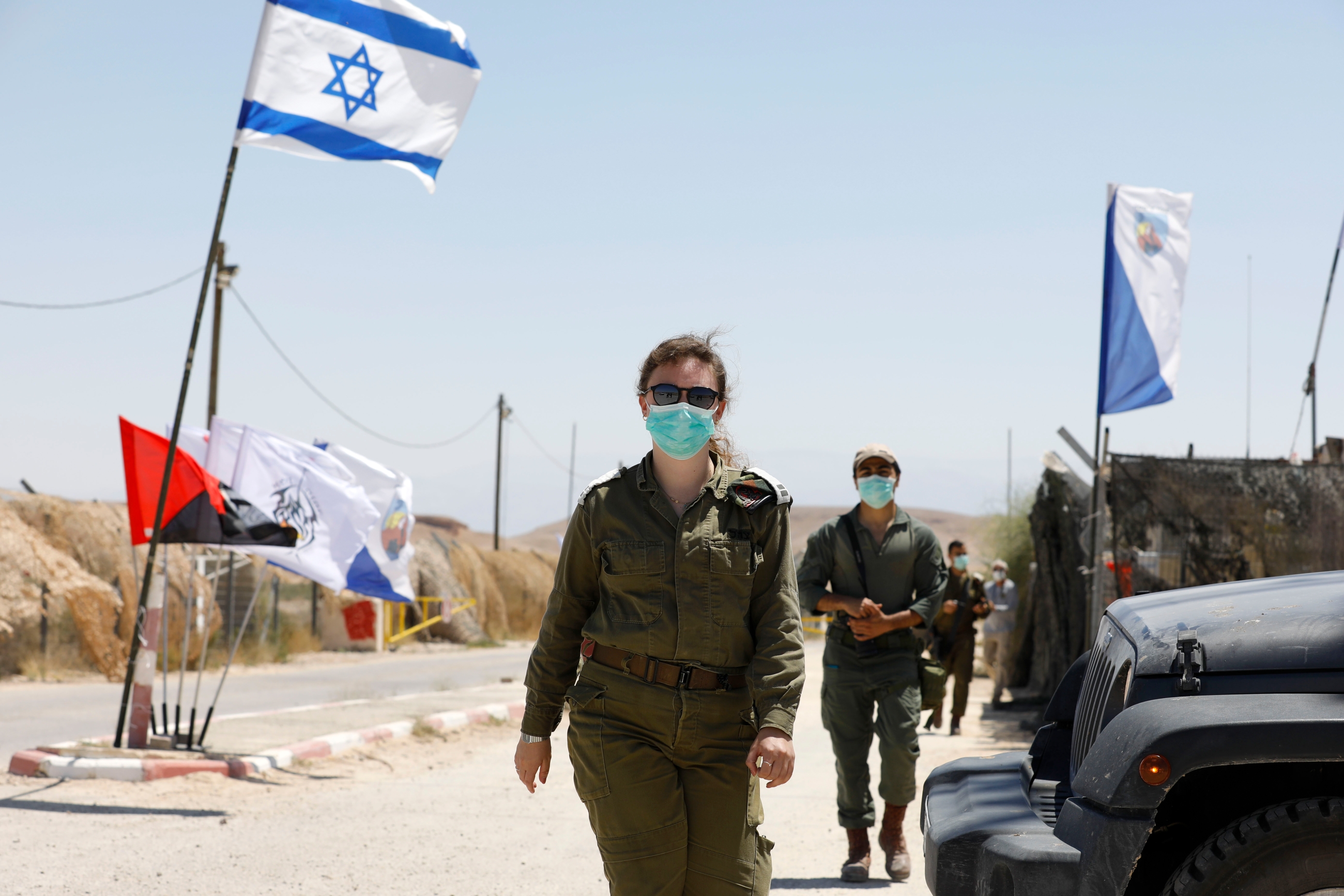
In September, Israeli Prime Minister Benjamin Netanyahu vowed that should he be re-elected in nearing elections, he would annex the occupied West Bank's Jordan Valley - forcibly claiming the territory as part of Israel.
At the time, Netanyahu revealed a map of 30 illegal Israeli settlements north of the Dead Sea that would be integrated into Israel as part of his plan.
Netanyahu failed to form a government in September, and Israel headed to the ballot box in March for the third time in the span of a year.
In April, the political deadlock was broken and a national unity government was formed with Netanyahu and former army chief Benny Gantz to alternate in the role of prime minister after 18 months - with the incumbent Netanyahu taking the seat first.
Netanyahu reached an agreement with his former rival Gantz to form a coalition cabinet that would advance an annexation plan starting in July.
But why is the Jordan Valley so important? What would annexation mean concretely, and who would it affect? And how is this Israeli move received by both Palestinian and international leadership?
What is the Jordan Valley?
The Jordan Valley and the Dead Sea are parts of the West Bank, which Israel has occupied since the 1967 Middle East war. The occupation of Palestinian territories has been condemned, notably through UN Resolutions 242 and 338, as violating international law.
Jordan, which used to rule over the West Bank until 1967, still acts as the custodian for Muslim and Christian holy places in occupied East Jerusalem's Old City.
Historically, the Jordan Valley used to refer to an area between the Dead Sea and the slopes of the mounts of Hebron and Jerusalem to the west. It also used to include areas between the towns of Bisan - now referred to by Israel as Beit Shean - and Safad, along the western edge of Lake Tiberias; and stretched south between Ein Gedi, an oasis on the Dead Sea, to the Negev desert. These southern- and westernmost points now fall inside Israel.
The Jordan Valley currently accounts for around one-third of the West Bank (almost 2,400 square kilometres) - the majority of its land falling within Area C, as defined under the 1993 Oslo Accords, which remains under full Israeli military control.
In January, US President Donald Trump unveiled his full Israel-Palestine plan - colloquially known as the "deal of the century" - which proposed for Israel to claim about a third of the West Bank in exchange for the recognition of a disjointed Palestinian state with no control over its borders or airspace.
Who lives in the Jordan Valley?
The announced Israeli annexation plan is limited to areas north of the Dead Sea, where 30 Israeli agricultural settlements house around 11,000 settlers.
To date, more than 600,000 Israeli settlers live in sprawling settlements and outposts in Area C, often in confrontational proximity to the three million Palestinians living in the West Bank and East Jerusalem. The transfer of civilian populations to occupied land is considered illegal under international law.
Historically, Palestine Liberation Organisation (PLO) guerrilla fighters operated in the Jordan Valley to launch armed attacks on Israeli settlements, most famously on Beit Shean, before the PLO was forced to move its headquarters out of Jordan into Lebanon in the early 1970s after violent clashes with Jordanian forces.
Today, some 56,000 Palestinians reside in the Jordan Valley, including in the city of Jericho, where their daily lives are deeply impacted by Israeli occupation policies. The Coordinator of Government Activities in the Territories (COGAT), a unit of the Israeli army, is responsible for overseeing building permits, water, agriculture, road construction and other civil matters in Area C.
The Israeli army and COGAT regularly place hurdles on Palestinians' access to their lands and water for everyday use and for farming and agriculture, and they stage military exercises in the area, turning village lands into closed military zones.
Why is the Jordan Valley so important?
The West Bank's Jordan Valley is rich in minerals and agricultural soil and is a highly strategic area, as it lies along the Jordanian border.
Israel has long prepared the ground for the annexation of the border territory, building a network of highways such as the Allon Road to separate the Jordan Valley from the rest of the West Bank.
Jordan shares 335km of borders with Israel and the West Bank, and Amman's security coordination is highly treasured by Israel's military and intelligence.
The areas slated for annexation amount to around one-third of the West Bank and include a 97km stretch along the border with Jordan, including two crossings - the Sheikh Hussein Bridge and the al-Karameh Bridge, also known as the Allenby crossing.
Naftali Bennett, Israel's former Minister of Defence, said in January that Israel is “facing crucial days of establishing its permanent borders and applying sovereignty to Jewish settlements” in the West Bank.
Should annexation be fully implemented, Israeli laws would be applied to these areas, instead of orders and regulations issued by COGAT.
Since World War II, there have only been three cases of annexation throughout the world: Iraq's invasion of Kuwait in 1990; Russia's annexation of Ukraine's Crimea in 2014; and Israel's seizing of Arab territories, including the Syrian Golan Heights and Lebanon's Shebaa Farms, since 1967.
Who supports annexation, and who doesn't?
While Israel's colonisation of the West Bank and East Jerusalem has continued under all Israeli governments since 1967, it has accelerated in recent years under the leadership of Netanyahu and his ally in Washington, Donald Trump.
Unsurprisingly, the US has been a lone voice to come out in support of annexation on the international stage.
In April, US Secretary of State Mike Pompeo urged Israeli leaders to consider "all the factors" before proceeding with annexation so that it aligns with Washington's plan for the region.
Pompeo said that annexation was “an Israeli decision, and we will work closely with them to share with them our views of this in a private setting”.
Annexation of the Jordan Valley could effectively kill whatever hopes remain for a two-state solution to the Israeli-Palestinian conflict - long the focus of international diplomacy - as it would render completely impossible the establishment of a viable, contiguous Palestinian state.
As a result, a number of world leaders have expressed their opposition to the move.
Palestinian Authority President Mahmoud Abbas announced on Tuesday an end to all agreements and understandings with Israel and the United States. Speaking after an emergency meeting of the Palestinian leadership in Ramallah, the 85-year-old leader said Israeli annexation of any parts of the West Bank would ruin chances for a two-state solution.
Abbas said the Palestinian government was "absolved, as of today, of all the agreements and understandings with the American and Israeli governments and of all the obligations based on these understandings and agreements, including the security ones".
Meanwhile, Jordan's King Abdullah II has warned that the Israeli plans to annex parts of the West Bank could lead to "massive conflict", adding that the Hashemite kingdom was "considering all options" - including freezing or cancelling its 1994 peace treaty with Israel.
"I do not want to make any threats and create an atmosphere of controversy, but we are considering all options," King Abdullah told German magazine Der Spiegel earlier this month when asked about the possibility of cancelling the Wadi Araba treaty.
The European Union said that it would not recognise Israeli annexation or any changes to the boundary known as the Green Line.
“The EU and its member states recall that they will not recognise any changes to the 1967 borders unless agreed by Israelis and Palestinians,” the EU’s top diplomat Josep Borrell said in a statement.
“The two-state solution, with Jerusalem as the future capital for both states, is the only way to ensure sustainable peace and stability in the region,” Borrell added, reiterating the EU's longstanding stance.
Nickolay Mladenov, the UN's special Middle East envoy, said that Israel “must abandon threats of annexation”.
While a two-state solution has long been touted as the only acceptable alternative by most foreign powers, many Palestinian activists have pointed out that circumstances have long made it impossible. Instead, a growing number of voices have advocated for a one-state solution encompassing all territories once part of historic Palestine and guaranteeing equal rights for all citizens.
Middle East Eye propose une couverture et une analyse indépendantes et incomparables du Moyen-Orient, de l’Afrique du Nord et d’autres régions du monde. Pour en savoir plus sur la reprise de ce contenu et les frais qui s’appliquent, veuillez remplir ce formulaire [en anglais]. Pour en savoir plus sur MEE, cliquez ici [en anglais].


